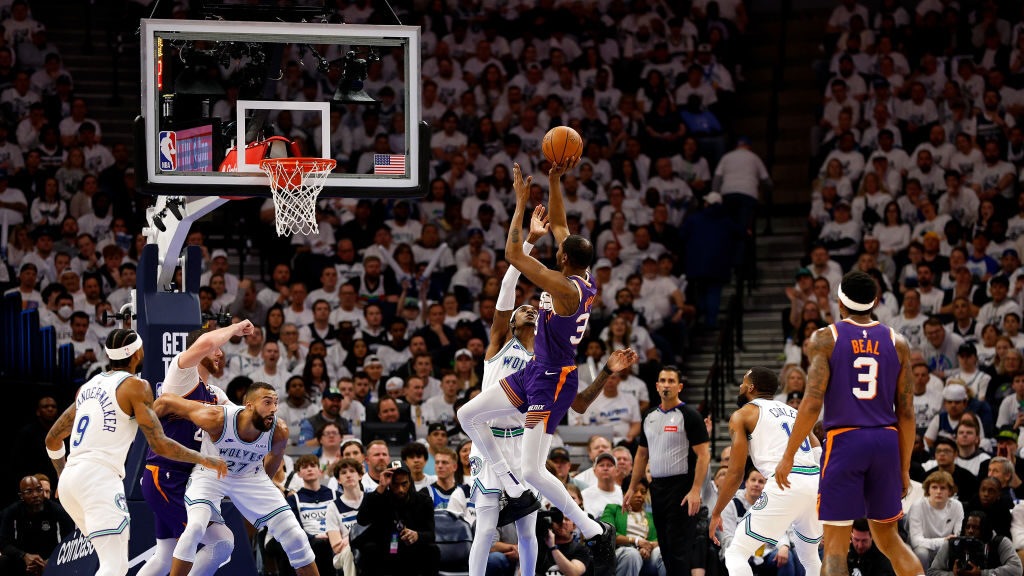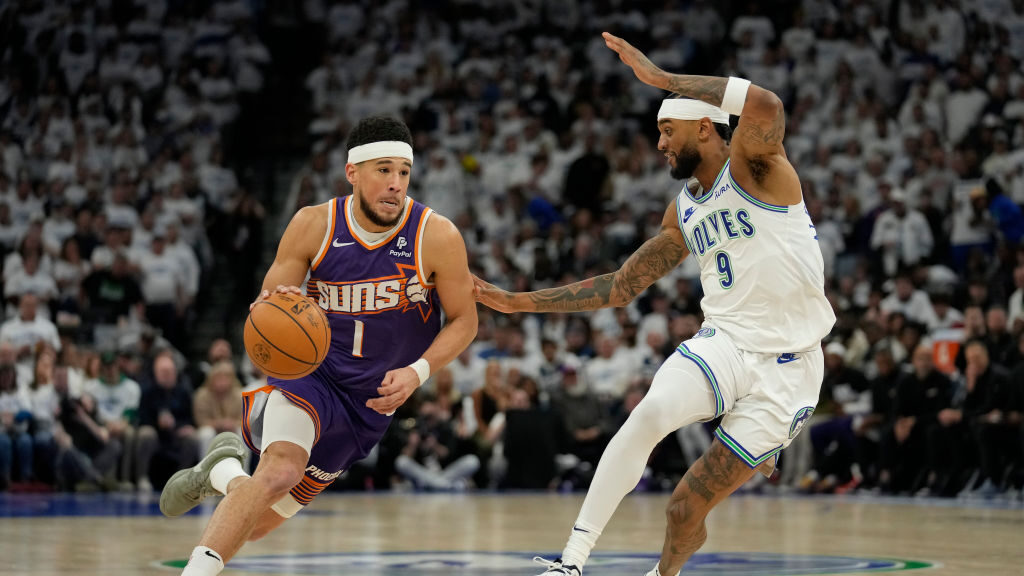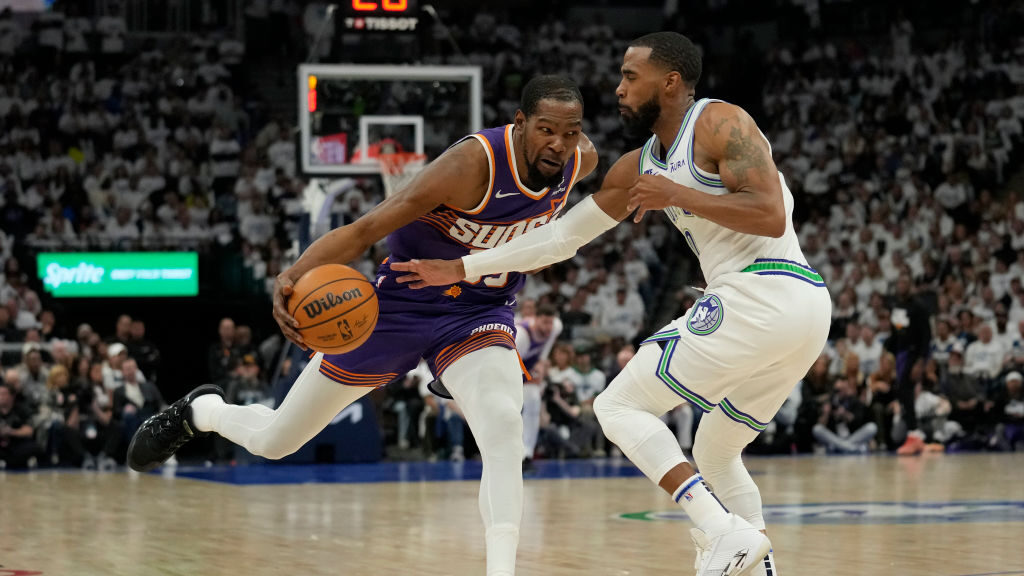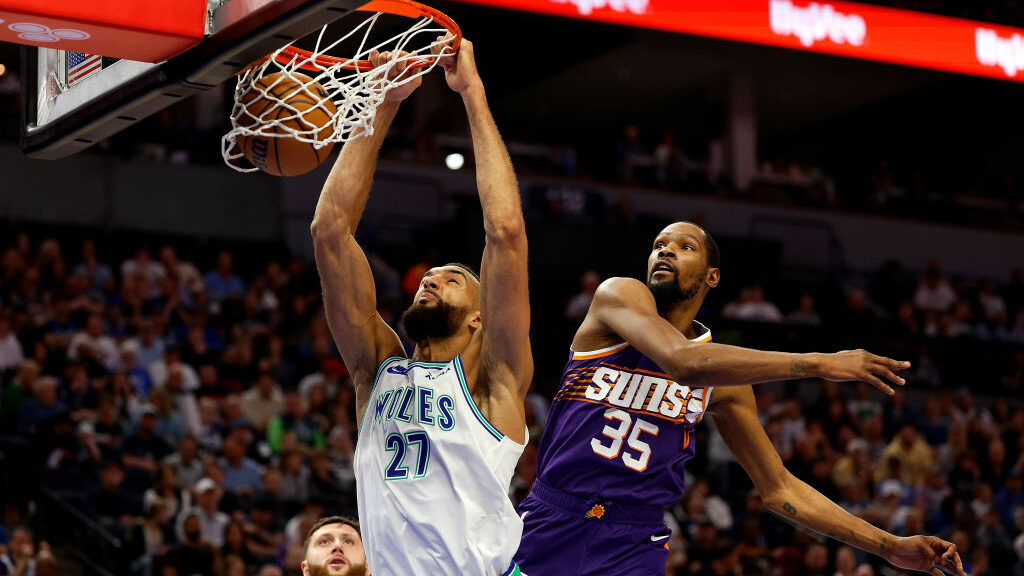Empire of the Suns NBA Draft positional preview: Point guard
May 10, 2017, 5:55 AM | Updated: Jun 16, 2017, 5:34 pm

With Phoenix Suns general manager Ryan McDonough saying during exit interviews the team will take the best player available in the 2017 NBA Draft, it’s time to run through Phoenix’s roster and the possible options with its picks currently at Nos. 2 (projected), 32 and 54.
We wrap up the series with point guard, the position that has by far the most discussion surrounding it over the past couple of months.
(Note: To make this easier, players that qualify for multiple positions are listed at their best guess and fit with the Suns. Considering Phoenix’s draft positions, there’s also a chunk of the first-round prospects not worth including.)
Point guard
Team outlook: On paper, this is not a position the Suns need to fill with any of their three picks. Eric Bledsoe just played the best basketball of his career as a sign of entering his prime at 27 years old, last year’s second-round pick Tyler Ulis showed he’s ready to be a backup point guard right now and Brandon Knight remains on the roster with his uncertain future.
Draft outlook: The problem is the top end of the draft is loaded at point guard and no player ranked in the top-10 outside of Josh Jackson is a natural fit on the roster.
If the Suns stay in the top-2, Markelle Fultz and Lonzo Ball are special enough to warrant moving Bledsoe to firmly establish players selected in their past three drafts as the group that will eventually lead the team back to the playoffs.
Fultz is the best prospect in this class by a significant margin, which is seemingly becoming close to a consensus opinion the closer we get to June 22. For a terrible Washington team, Fultz averaged 23.2 points, 5.7 rebounds and 5.9 assists while still shooting 47.6 percent on field goals and 41.3 percent from deep.
For perspective on how special his freshman year was statistically, College Sports-Reference goes back to 1992 and there are only five instances of a player averaging at least 22 points, five assists and five rebounds while having a true shooting percentage of at least 55. Fultz and Penny Hardaway are the only non-seniors on the list, and Hardaway was a junior.
There’s a reason the discussion surrounding the Boston Celtics — the favorites to have the No. 1 pick — is about whether or not they should trade Isaiah Thomas, who just scored 53 points in a conference semifinals game. Thomas is due for a big contract extension, and Fultz’s ceiling is much higher than what Thomas currently is — an NBA All-Star.
Fultz is the most balanced player in this class, possessing high-level talent as a shot creator and playmaker. His athleticism along with his playmaking is going a bit under the radar, and all those skills combined will make him a frightening player in the NBA era of “pace and space.”
As The Ringer’s Jonathan Tjarks told me when I asked about how Fultz fits with Phoenix, the question with Fultz isn’t how Fultz fits with a team’s pieces. It’s how the team builds around Fultz. He’s the true No. 1 building block all teams in a rebuild crave.
— Washington’s Markelle Fultz is a draft prospect worth losing for —
Ball, on the other hand, has some well-documented flaws, but he’s also a talent that could be a once in a generation type well if everything goes right.
He can match Fultz in the jaw-dropping averages and his numbers, in some ways, were even rarer than Fultz’s.
At 14.6 points, six rebounds and 7.6 assists per game on a 55.1 field goal percentage and 41.2 three-point percentage, he’s one of two players since 1992 to average at least 12 points, five rebounds and six assists on a true shooting percentage of at least 60. Denzel Valentine was the other as a senior for Michigan State last year, and his true shooting percentage of 60.8 barely made the cut. Ball crushes him at 67.3.
One of the best passers coming into the NBA in the past decade or more, Ball is also a lethal three-point shooter with extended range and a heady player defensively, racking up steals and making smart, instinctual plays.
His halfcourt offense and pick-and-roll play are a mess, and he’s never going to be anything great on defense, but with the right team playing Ball’s brand (no Big) of basketball he could be very, very special. Phoenix has the athletes in transition to make Ball’s playmaking shine the brightest and a secondary ball-handler in Booker to keep the offense efficient in halfcourt situations. The defense and shooting could be better for the fit, but that’s the problem for the Suns with any player, not just Ball.
Even if the worst-case scenario unfolds, however, and the Suns land outside the top-2, there’s still De’Aaron Fox, Frank Ntilikina and Dennis Smith Jr. that all have All-Star potential to various degrees.
Out of everyone not named Jackson, Fultz or Ball, Fox is the name to keep an eye on for the Suns, and it’s not because he’s a guard from Kentucky.
The distinction for Fox, who put up 16.7 points, four rebounds and 4.6 assists per game for the Wildcats, is that he’s a capable point guard who can run the offense for his team while also having the defensive proficiency to be a two-way player sooner than nearly everyone else in his class.
His jump shot is a huge red flag after he shot 25 percent from deep this past season, and the last thing the Suns need to add is someone who can’t shoot, but he’s a very good slasher and should still be an effective offensive player however the jumper turns out. With that in mind, is his defensive potential alongside Devin Booker, a very poor defender at this stage in his career, worth more than someone who might be just fine on offense? That’s the big question the Suns might have to ask if they pick outside the top-3.
If the Suns were to draft Fox, they find themselves in a strange predicament that we discussed on the latest Empire of the Suns podcast (above). He’s not quite good enough for the Suns to trade Bledsoe right away, but he also should not be playing behind Ulis at any stage in his career. Is his selection worth further complicating the point guard carousel?
Those are the big questions the Suns might have to ask if they pick outside the top-3.
Beyond that, Ntilikina is your international draft darling of this year’s class. The appeal of the 18-year-old Frenchman is, at 6-foot-5 with a lengthy wingspan and quick feet, he has the highest defensive upside of anyone in the draft. Quick, name all the players in the NBA who are capable of shutting down both guard positions.
Didn’t have to use two hands, huh?
Ntilikina’s jumper is promising, as he hit 40 percent in all competitions from deep, but there are legitimate concerns regarding his primary ball-handling. In his 18.2 minutes per game playing in France, his primary initiator skills have proven to be quite raw. This is keeping Ntilikina closer to 10 than five on most online draft boards.
Maximizing his value as a defensive stopper and a reliable three-point shooter off the ball with a ball-handler at the two would be the best way of using him.
That’s how the Suns would.
The fit with Booker on both ends is there and perhaps most importantly, his time developing would give the Suns a reason to hold onto Bledsoe for the foreseeable future. Ntilikina spent a good chunk of time in France playing the two, making all the Ulis fans out there not flip their tables at the suggestion of the Suns taking a point guard and then not trading Bledsoe; and not burying Ulis or a prior top-five pick on the depth chart.
Smith was seen as the second-best point guard prospect by many heading into the college season but was not able to maintain that momentum at North Carolina State despite putting up 18.1 points, 4.6 rebounds and 6.2 assists per game. He appears firmly out of the conversation in the top-3 of the draft.
His shot selection and reliance on a consistent jumper — 35.9 percent from three-point range and his pull-up stats were not very encouraging — has his offensive potential rightfully lower than Fultz’s and Ball’s. While that’s true, Smith still utilizes his athleticism, all-around ability as a scorer (aided by a nice handle) and passer best in the pick-and-roll, where he is without a doubt better than Ball. His vision in particular is very underrated.
Like Fultz, the tools are there defensively, but because of some spotty effort there’s doubt as to whether he could be anything more than average.
This makes Smith somewhat of an upside play in the draft, but in terms of the highest ceilings in the draft, he’s certainly in the top-5, probably the top-3.
For Phoenix, Smith is the worst fit of the three because one of his better projections as an NBA pro is someone along the lines of Bledsoe offensively: an athletic freak who can consistently score.
Ntilikina and Fox would give the Suns something they truly need, while Smith would be far more of the “best player available” mantra.
Now, how would the Suns handle one of those three players, not to mention Fultz or Ball, with Bledsoe and Ulis on the roster?
It’s unclear. Yet, when you’re taking the best prospect for your team in this draft and you’re picking in the top-10, odds are you are taking a point guard.







